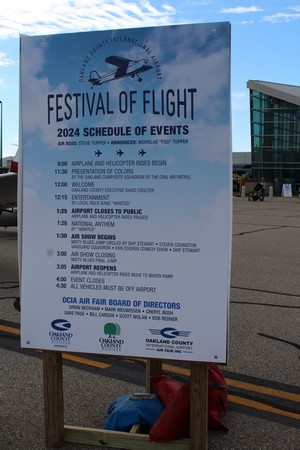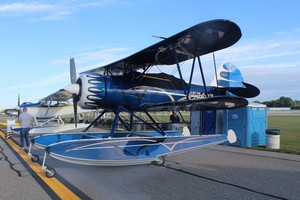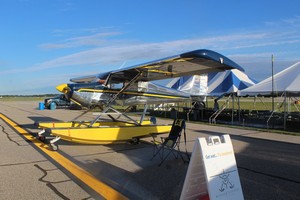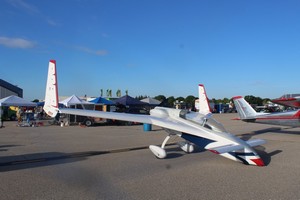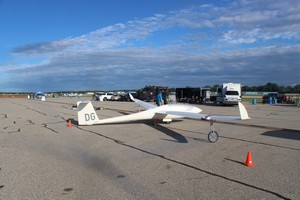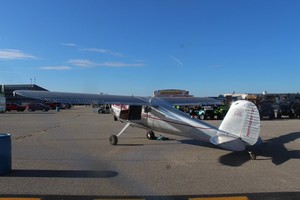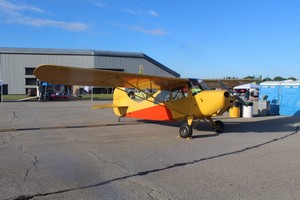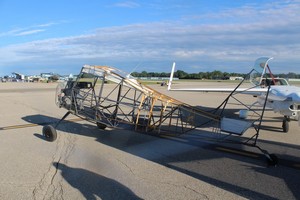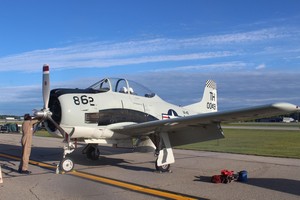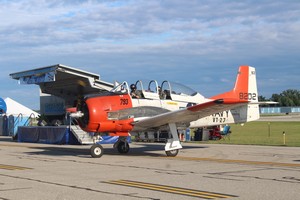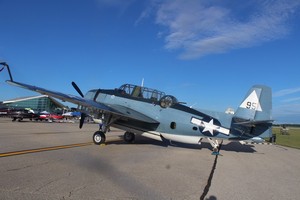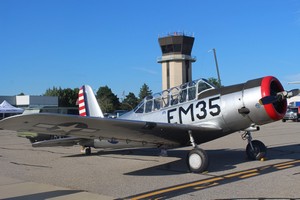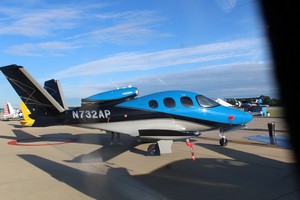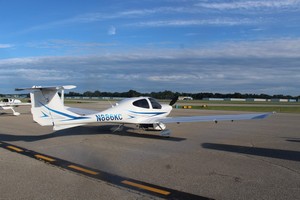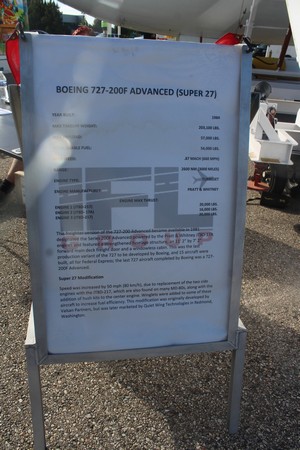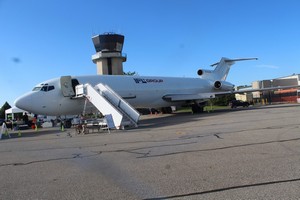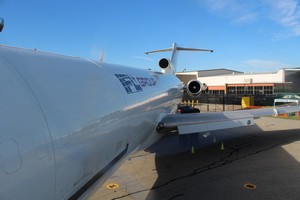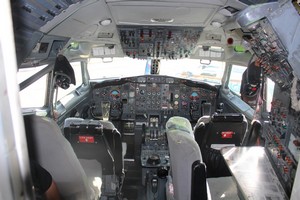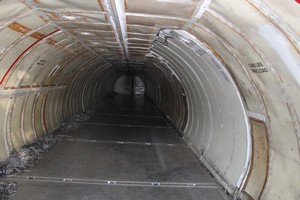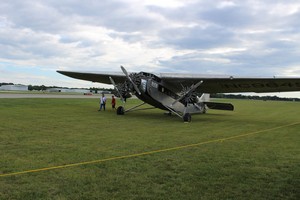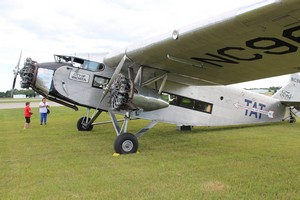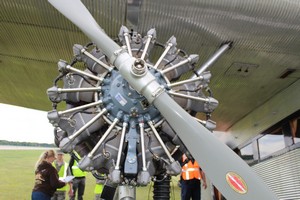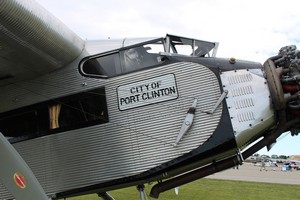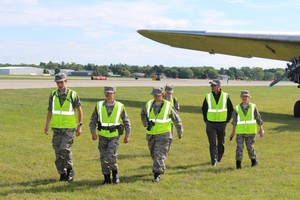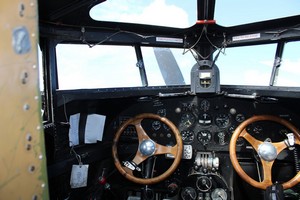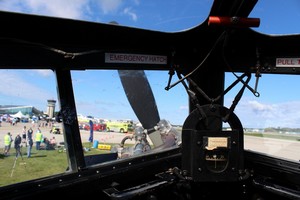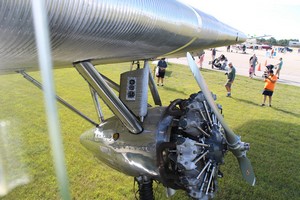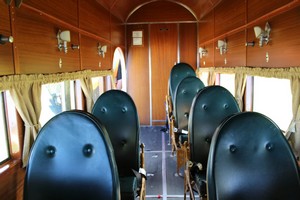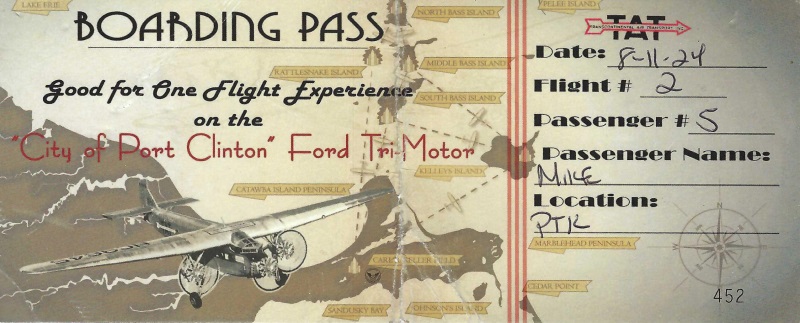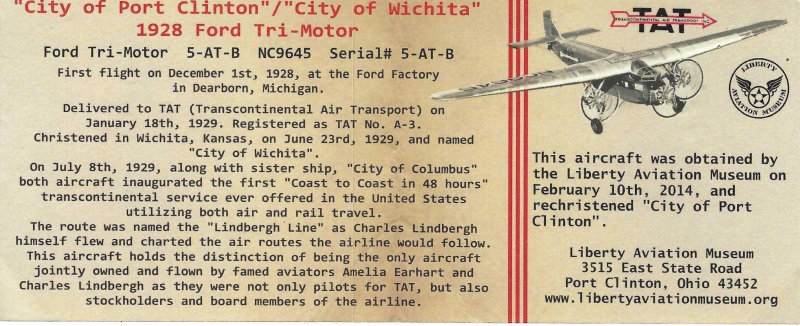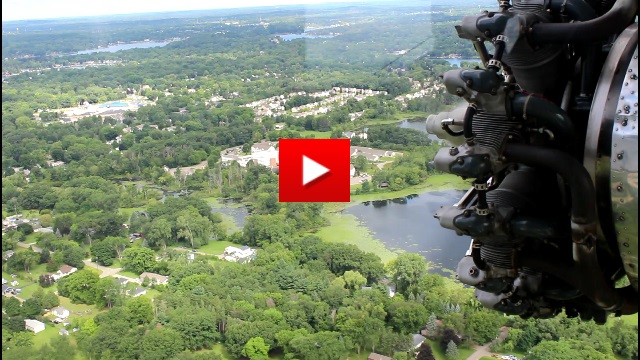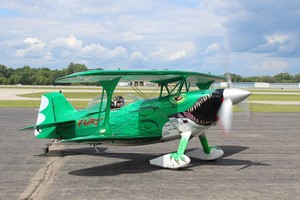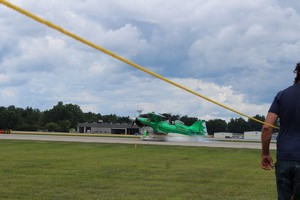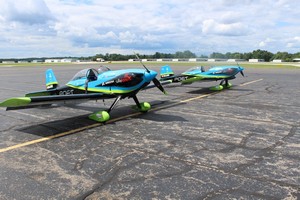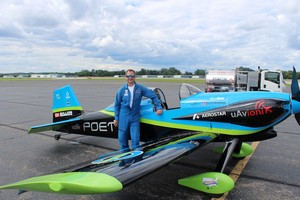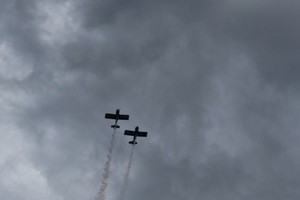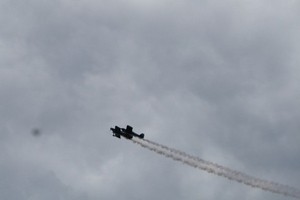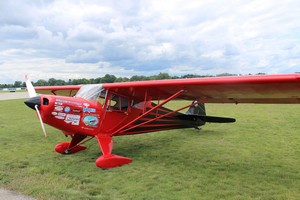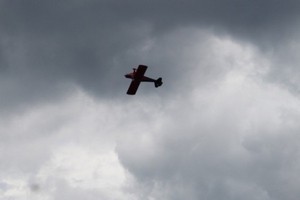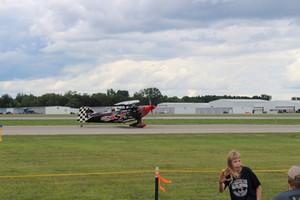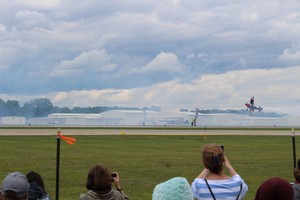Up early, and off to Oakland County Airport. Aircraft have been arriving for the static display, mostly under their own power, but some trailered in, all of yesterday and this morning. A whole bunch of unusual ships ranging from mid-war military craft to modern experimental planes. Steve, as expected was running all over the place performing his duties as show "Air Boss", and had little time for me. FOD was also quite preoccupied for much of the time, as he was the show's Master of Ceremonies, doing the play-by-play announcements over the PA system throughout the day. So I amused myself wandering among the variety of craft in the static display.
Static Display
As I said in the introduction to this post, I've been a mild aviation buff since I was a kid. So it was a real treat for me to wander among these unusual aircraft, and inspect them from close up. We had arrived onsite around 10:00, well before the general public was admitted at noon, and more planes were still arriving, positioning themselves in two rows along the airport's taxiway. These are some of the more interesting ones.
Photo 11: An absolutely pristine and gorgeous Cessna 182P float plane built in 1973.
Photo 12: Neither Steve nor I know what this one is, but you need sunglasses to protect your eyes from that mirror finish.
Photo 13: A most unconventional Rutan Long EZ. Burt Rutan is an innovative engineer designer who made his name designing unusual looking single- and 2- seat private planes available in kit form for their owners to assemble. His designs eschewed the usual convention of propeller and wings in the front and tail in the back. The Long EZ was one of his first and most successful creations, featuring a "canard" (horizontal stabilizer and elevator in front) layout, a pusher propeller in the rear, and vertical stabilizers and rudders at the tips of the swept-back wings. The unusual attitude of the nose resting on the ground is to preserve the proper balance of the craft in flight. When the pilot gets in the cockpit, his weight aft of the landing gear will pivot the plane into its normal attitude with the tail wheel on the ground, and the nose pointing up.
Photo 14: Schempp-Hirth Ventus-2B glider
Photo 15: A plain old ordinary Cessna 140, one of the most successful and long-lived private planes, this particular one built in1946. How many 78 year old cars do you know that are still on the road in everyday service?
Photo 16: Aeronca Champ. Another of the legacy 2-seat light private planes of the mid-war period still relatively common today.
Photo 17:Citabria partway through a complete nose-to-tail restoration. Another successful long-lived private plane, this one built in 1976. One small difference from the Cessna, with a clue to the difference in its name. "Citabria" is "Airbatic" spelled backwards. The placard in front of the display optimistically states, "It should be flying by Tuesday."
Photos 18 & 19: The North American Aviation T-28 Trojan is a radial-engine military trainer aircraft manufactured by North American Aviation and used by the United States Air Force and United States Navy beginning in the 1950s.
Photo 20: Grumman TBF Avenger. This is a World War II carrier-based torpedo plane. It was known as being highly unsuccessful at the Battle of Midway in 1942, where the entire flight of them was shot down by anti-aircraft fire from the Japanese carriers, leaving only one survivor floating in the water. However they did serve to divert that anti-aircraft fire, leaving the carriers vulnerable to the following American dive bombers, which succeeded in sinking three of the four carriers. This particular example was built in 1945.
Photo 21: The Vultee Valiant that Steve flew in yesterday
Photo 22: Vision Jet. A very snazzy corporate jet. Very fast, very loud, and noted for its particularly large "vee" tail.
Photo 23: Diamond DA 40, very sleek-looking private craft built in 2007
Boeing 727-200F
Looking somewhat out of place among its smaller brethren on the static display line was this relatively huge 727 cargo plane. It looked sort of odd, bereft of windows along the fuselage. There was a stairway in place in front of the pilot's entry door, and it looked like it was available for public inspection, but the airshow was not yet open to the public. Reasoning that it was easier to beg forgiveness than to ask permission, I poked my head in, and looked around. It later turned out that the plane was indeed open to the public, so neither permission nor forgiveness was required.
The gates opened to the general public at noon. After lunch (a rather lukewarm cheeseburger and soggy fries from the food trucks) I was surprised and delighted to see a Ford Trimotor (Pronounced "Try-Motor") that had evidently landed when I wasn't watching among the other ships on the static display. The Trimotor was one of the earliest commercial airplanes specifically designed for passenger service. It went into production in 1925, a scant 23 years after the Wrights' first flight, an astonishing example of the speed of progress of heavier-than-air flight. And yet for all that, it was still a rather primitive machine. It was purchased by many American airlines, some of which offered coast-to-coast service in only 3 days. One would board the plane in the morning in New York City, fly all day with 2 or 3 refueling stops, and land in the evening. Passengers would then transfer to sleeper cars on a train, and continue their journey through the night. The next two days they would repeat the process, arriving in Los Angeles sometime on the third day. That was still half the time of a transcontinental rail journey. So the Trimotor was sort of a Roaring 20's version of the Concorde. You paid an enormous premium to get there faster than any other mode of transport if time was your only priority.
I asked if I could get up close and take some photos. The lady said, "Sure!"
Ford Trimotor
Photos 29 & 30: There it stood in all its glory. Bare-bones air transport. Three 300 HP radial engines, one in the nose and two more hanging out in the breeze mounted on the wing struts and the legs of the non-retractable landing gear. It was really the Model-T of airliners: Simple, rugged, easily serviced, no frills, reliable (for its time), and available in any color you liked, so long as it was unfinished aluminum.
Photo 31: This photo is of the right engine, and Wright R-975-1 300 HP, 9-cylinder radial, quite advanced for its time. Just hangin' out in the breeze with no cowling or other bodywork around it to reduce aerodynamic drag, except a little teardrop shaped aluminum housing behind it.
Photo 32: You may need to view this one in full-screen by clicking the photo to see this. Note the two levers with the wire cables attached to them. These are the mechanical linkages between the flight controls in the cockpit to the ailerons and (I think) the rudder that control the flight of the plane. All very Model-T-basic in concept, with no attempt to reduce the extra drag they would present, in favor of making them easier to service.
Photo 33. Not specifically connected with the Trimotor, but omnipresent throughout the day. There was a whole regiment of kids in uniform onsite doing logistic work: directing traffic, putting up fences, and other such scutt work. This was the Civil Air Patrol, a civilian auxilliary of the United States Air Force. They were of all genders, and ranged in age from 12 to 20. Very useful, well behaved, and well led. Might be the Air Force's way of indroctinating kids into aviation. If so, I'm all for it.
Photo 34: I climbed into the passenger compartment. A far cry from today's airline experience where you walk down the jetway and get only the tiniest view of the outside world thought the gaps between the jetway shroud and the the fuselage. Here they give you a box to step on in order to reach the doorway. Up at the front there isn't even a door between the passenger compartment and the pilot's cockpit. Just a bulkhead with an opening for the crew to step through. Again, balancing the forgiveness vs.. permission options, I stepped through and sat in the left (pilot's) seat. A bare minimum of flight instruments (Compare it to the instrumentation of the 727 shown in Photo 27) and two charming wooden steering wheels on the control stick. I wondered if the plane would go "Beep" if I pressed the metal hub of the wheel. I gave the wheel a turn and a pull, feeling the weight of the elevators on the far end of the control cable. All very primitive.
Photo 35: This is what the world looks like from the pilot's perspective. There's not very much of it to see. The nose engine blocks a lot of what one can see straight ahead. I was standing when I took that photo. When I sat in the seat, I couldn't see anything on the ground at all. The lower edge of the window was almost at eye level, and the nose was pointed up as the plane rested on its tail wheel. I wondered why they didn't make the seat a couple of inches higher to mitigate that. There was plenty of headroom available.
Photo 36: The view of the left engine from the pilot's seat. Notice the engine gauges (tachometer, oil pressure, oil temperature) right on the engine strut, rather than putting them in the cockpit. Also very clear in this photo is the corrugated aluminum skin of the wing for stiffness. Almost the entire exterior of the plane was clad with this material.
Photo 37: Passenger compartment, showing 6 of the 11 seats. Note that everyone aboard had both a window and an aisle seat. The door in the back originally went to a lavatory, although the one in this plane was not functional. The seats were quite comfortable, with more foot room than in current economy class. They did have seat belts, although I wonder if there were any installed when the plane was manufactured. The high ceiling, wood paneling, window curtains, and decorative lamps are all reminiscent of railroad cars of the era. This was deliberate, as the airlines wanted to provide familiar surroundings to passengers used to traveling by train.
They were offering rides in the Trimotor. I asked the nice lady what was the cost. The nice lady said, $99. I hemmed and hawed, and said, "You know, I can afford that, but I really can't justify it.." The nice lady said, "Well, it's a once-in-a lifetime chance. When are you ever going to have the opportunity again?" I said, "Thanks, but no thanks.", and walked away
Half an hour later, I walked back, and said "Sign me up!"
Boarding Pass
|
Things have changed some since the Trimotor was the deniere cri in air travel. No security checks, No need to take your shoes off. No arrival at the airport an hour and a half before your flight leaves. No weighing your baggage. (No baggage.) No stuffing your carry-on into the overhead bins. (No overhead bins.) No need to set your phone in "Airplane Mode". You could probably even carry your pistol on board if you were discrete. I chose a seat where I could get a good view of the starboard engine, and still see the ground over which we flew.
The Flight
It was not a particularly exciting flight. Consequently this is not a particularly exciting video. The flight was about a half hour, and the video is 11 minutes long. I had originally thought about editing it to make it shorter, but I eventually decided against that. What should I cut out? What should I leave in? I like to watch it in its entirety, as it brings back the experience, but you may get bored. So I'll go over the timeline and let you fast-forward or not as you will.
Shortly after the start of the video you can hear the engines start up. The left engine starts at about the 00:12, the nose engine around 00:39, and the right one, the one we're looking at, around 00:51. You can hear especially clearly that the first engine runs unevenly at first, with one cylinder firing more prominently than the rest, and then it starts to even out. It's probably the same with all three engines, but the first one masks the sound of the subsequent ones. But they soon settle out into a very smooth, and somehow reassuring rumble.
The pilot starts to feed power to the engines, and we start the taxi around 02:30. We transfer from the taxiway and onto the runway proper around 04:13. The pilot immediately advances the throttles, and we take off with no hesitation. The relatively low power, as compared to modern jets, is evident. We're not pressed into the seatbacks the way we're used to, but the plane takes off in relatively short distance. The thick wings give a lot of lift at low speeds, and the aerodynamic drag caused by those thick wings, and all of the struts and un-faired engines, and un-retracted landing gear keep that speed low. I can almost feel the engines straining against that drag as we climb to altitude.
The altitude is much lower than we're accustomed to. We tool around at maybe 2,500 to 3.000 feet. Details on the ground are very clear. The cabin noise is quite loud, any conversations need to be shouted. But I felt no urge to talk to anyone. I was just digging the experience. And again, the steady roar was comforting and reassuring in its consistency.
The ride was not smooth, but any up-and-down motions were quite gentle. Our low velocity contributed to that gentleness, as we transitioned from regions with different wind velocities and directions much more slowly. Modern airliners' wings will flex as they encounter different air velocities. Not so the Trimotor. Its wings could have been carved out of single block of wood.
At around 05:45, the plane goes into a moderately steep right bank for a turn, but the pilot is good, and the turn is well coordinated, so all I feel is a slightly heavier force pushing me into my seat. We fly over some lakes and houses. It's a lovely day for flying, with good visibility. The low altitude allowed the pilots of the day to follow railroad tracks, roads, and other landmarks very easily to navigate their route.
Around 08:00 the airfield comes into view, and we head for a landing. At 09:00 we are obviously descending, but I hear no discernible change in the engine noise. We still need considerable engine power to maintain airspeed against all that drag. At 10:00, the runway appears beneath our wheels, and we finally touch down at 10:10.
It's a very different experience from commercial flights today. Very pleasant. A gentler, and somehow more approachable, more human experience. I don't know how pleasant it would feel after 7 or 8 hours in the air on a long flight, but those 7 or 8 hours would be spaced out with refueling stops. More like train travel. I can remain fascinated by the scenery passing by for hours on a train, and the scenery is a lot closer to the Trimotor than a 747.
The Airshow
At 1:30, the airshow proper began. It was preceded by some music from a local rock band, and the National Anthem, and then the flying began. This, of course was the most spectacular part of the afternoon, but the least photogenic. At least with my skills and equipment. Photos would not depict the intricate movement, and videos were almost impossible to hold steady without a viewfinder, relying only on the tiny video screen on the back of the camera. So the photos above are a poor representation of the goings on. FOD served as play-by-play announcer, introducing each performer and describing the maneuvers..
The show was supposed to have been opened by an all-female skydiving team called the Misty Blues, but the conditions were deemed too windy for it to take place, so that event was scrubbed. This is very typical of the aviation mind-set: "Safety Above All". I've seen Steve get into a plane he's flown a thousand times, and go through a pre-flight ritual, reading aloud from a sequence of operations printed on a card he's read a thousand times, and then performing each check. "Propeller area clear. Lights on. Rear seat belts secured. Flaps 20°." Etc.) Ah well. Better safe than sorry.
Photos 41 - 43: Steve Covington and his plane "Fury": An aerobatic little biplane with an enormous engine put on a rather exciting display of making an airplane do things they don't usually do. Loops, rolls, split S's, inverted flight, hanging on the prop, stalls, spins, and pulling out of maneuvers frighteningly low to the ground, all the while leaving a smoke trail.
Photos 43 - 46: The Vanguard Squadron: These two planes performed maneuvers in tandem or side by side. The maneuvers were much larger and less violent than Covington's but the skill, coordination, and control to perform them precisely together was impressive.
Photos 47 - 49: Eric Edgarton, aerial clown: The premise of this act was that a first-time pilot was supposed to be having his very first flying lesson. After they got the engine started, there was something wrong with the controls, and the instructor got out to check what was wrong. And then the rookie, who also appeared to be drunk, took off without her. The novice flew erratically, making all sorts of dangerous-looking attempts to land, all the while flying sideways, stalling the ship, and barely recovering. Meanwhile FOD was giving him helpful advice over the PA system. I had seen this act, performed by another pilot, several times before, so I sort of knew what to expect. the whole act was pretty transparent from the get-go, and the audience happily suspended disbelief and enjoyed his antics.
Photos 50 - 51: Skip Stewart: They saved the best for last, and I didn't get any really good photos of it. Skip's show was similar to Covington's but ever more so. The maneuvers were more complex and violent, the pullouts lower and somewhat scary. He had one stunt where he flew down the runway sideways, and cut a ribbon stretched across the runway held about 10 feet off the ground by confederates (Photo 51). It was a fitting end to a fine show.. ,
We packed up, and I flew back to Detroit City Airport with FOD. We grabbed a bite of dinner, and then Steve came over to visit. I played a little music for them with FOD's guitar, and we turned in.
A very full day.
